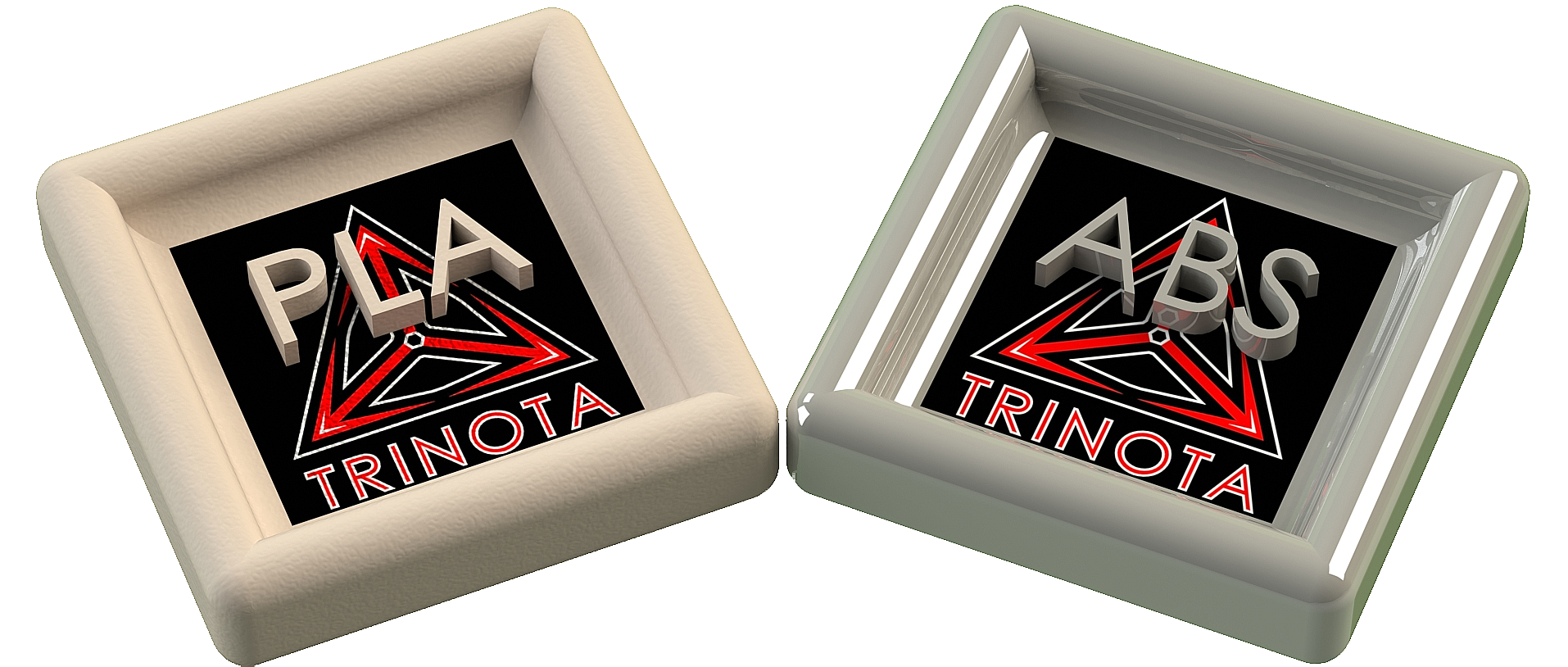
When it comes to 3D printing for the hobbyist/typical user, you generally have 2 choices (however, sometimes you may only be allowed one or the other): ABS or PLA. Well, how do you decide? I’ll attempt to give you a better understanding of these two acronyms.
I’ll start off by saying, that as a material scientist/biomedical engineer, PLA is my favorite material - but if I had to choose a material to use, it would be ABS. I say Polylactic Acid (PLA) is my favorite simply because it’s biodegradable - it’s made from corn. Acrylonitrile Butadiene Styrene (ABS) is derived from petroleum and the groups that it’s comprised of, can be carcinogenic on their own...but the strength/surface finish that ABS produces, is simply mind-blowing. Below I’ll put together stats about each material and then you can conclude when and where (if you have a choice) to use each.
PLA
Rather rough surface finish
1 kg of Natural colored (no color added) 1.75mm diameter PLA costs about $24.80
+ Biodegradable
+ Do to it’s composition (corn or potato based), it is commonly used for medical implants (such as various fasteners) which will degrade safely in the body, and won’t require additional surgery for removal.
+ Lost PLA casting (this is an extremely cool process) - an item is 3D printed with PLA and then it gets encased by a ceramic. The solid mass of ceramic and PLA is then placed in a kiln, where the PLA melts away leaving a cavity in the ceramic that could be filled with various metals to reproduce a metallic version of said 3D printed object.
+ Recyclable back to virgin PLA via a process called “hydrolysis”
- Not the best choice if your end goal is functional working parts
- Not that strong. Tensile strength – 7,251.89 PSI
ABS
Smooth surface finish
1 kg of Natural colored (no color added) 1.75mm diameter ABS costs about $29.30
+ Produces an unbelievable surface finish
+ Great structural strength – Could see numbers as high as 410,000 PSI
+ Ideal for creating functional working parts
- Melted ABS gives off toxic fumes – At normal temperatures, ABS is perfectly safe however, due to the inherent function of 3D printers and melting ABS it could be argued that it’s not safe to be near a 3D printer using ABS (which is tough since a 3D printer building your part is extremely awe inspiring).
Each material has it’s own advantages and disadvantages. There’s not too much of a price difference between ABS and PLA, but the roughly $5.00 difference may add up. The 3D printers at TRINOTA all utilize proprietary versions of ABS, all of which provide great surface finish, as well as, unbelievable functionality.

